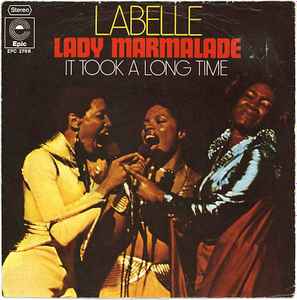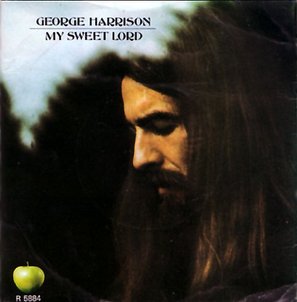 Some songs feel like they’ve always existed — echoing through the centuries, reinterpreted by each new generation. “Whiskey in the Jar” is one of those timeless folk tales, a traditional Irish ballad that’s been sung in countless pubs, fields, and backrooms since the 17th century. But when Thin Lizzy released their version in 1972, they didn’t just cover it — they redefined it. They took an old Irish lament and infused it with rock swagger, electricity, and soul. It wasn’t just a song anymore; it became a statement of cultural pride wrapped in amplifier buzz.
Some songs feel like they’ve always existed — echoing through the centuries, reinterpreted by each new generation. “Whiskey in the Jar” is one of those timeless folk tales, a traditional Irish ballad that’s been sung in countless pubs, fields, and backrooms since the 17th century. But when Thin Lizzy released their version in 1972, they didn’t just cover it — they redefined it. They took an old Irish lament and infused it with rock swagger, electricity, and soul. It wasn’t just a song anymore; it became a statement of cultural pride wrapped in amplifier buzz.
Thin Lizzy’s “Whiskey in the Jar” stands at the crossroads of tradition and rebellion. It’s a song that bridges the gap between the acoustic folklore of Ireland and the electric fury of 1970s rock. And in the hands of frontman Phil Lynott — the poet, the outsider, the black Irishman with a voice full of longing — it became something transcendent. His version didn’t erase the song’s past; it celebrated it with modern grit and romantic fire.
The Birth of a New Classic
By the time Thin Lizzy tackled “Whiskey in the Jar,” the band was still searching for its breakthrough. Their early albums had flashes of brilliance but hadn’t yet captured the mainstream. They were an Irish rock band trying to find their place in a British-dominated scene. Covering a centuries-old ballad wasn’t the most obvious move for a young rock trio hoping to make a splash — but that’s what made it so genius.
Originally, “Whiskey in the Jar” was a cautionary tale about a highwayman betrayed by his lover after robbing an English officer. Its lyrics were handed down through generations, with countless variations. But in every version, the themes were universal — betrayal, adventure, freedom, and consequence. Thin Lizzy’s interpretation kept the spirit of the story intact while wrapping it in the electric pulse of early-70s rock.
From the first shimmering guitar riff, it’s clear this isn’t a pub song anymore. Eric Bell’s guitar tone is drenched in reverb and attitude, creating a melodic hook that feels both ancient and modern. Lynott’s bass line provides the warmth and swagger, his playing as melodic as his singing. And Brian Downey’s drumming brings a loose, swinging groove that keeps the track rooted in rock rather than folk.
This blend — of Irish storytelling and modern rock instrumentation — became Thin Lizzy’s calling card. “Whiskey in the Jar” wasn’t just a hit single (reaching No. 6 on the UK charts); it was the song that announced the band to the world.
Phil Lynott: The Heart of the Song
No one could have delivered “Whiskey in the Jar” quite like Phil Lynott. His voice — soulful yet commanding — gave the story emotional depth. You can hear both pride and regret in every line he sings. When he delivers the line “I took all of his money, and it was a pretty penny,” there’s joy in the crime, a glint in his eye. But when he reaches “I must have been mistaken, for my darling used to be,” the heartbreak feels raw and human.
Lynott had a gift for blending bravado with vulnerability. That’s why this version resonates beyond just its melody. He doesn’t sound like he’s reciting an old folk song — he sounds like he’s living it. His phrasing gives the lyrics new weight, pulling listeners into the story rather than just entertaining them from a distance.
This emotional authenticity was one of Lynott’s greatest strengths. As an Irishman of mixed race growing up in Dublin, he knew what it meant to feel like both an insider and outsider — someone belonging to the culture but also standing apart from it. “Whiskey in the Jar” became a metaphor for his identity: an Irish legend reborn with a modern, defiant edge.
The Sound: Between Pub and Power Chord
The brilliance of Thin Lizzy’s “Whiskey in the Jar” lies in its arrangement. It walks a perfect line between honoring the folk roots of the song and reinventing it through rock instrumentation.
Eric Bell’s guitar work is central to the track’s success. That opening riff is one of rock’s most memorable introductions — bright, jangly, and melodic, yet sharp enough to cut through radio static. It’s a riff that instantly transports the listener to a windswept Irish hillside, only now the mist is charged with electricity. Bell’s solo later in the song is fluid and soulful, showcasing his ability to blend technical precision with emotional weight.
Downey’s drumming, meanwhile, adds a swing and looseness that keeps the song from becoming rigid or overproduced. His cymbal work, particularly during the chorus, gives the track an airy feel — a sense of motion and life.
The production, though relatively simple by today’s standards, captures the warmth of analog tape and the natural chemistry of a band playing live. You can almost picture them recording it together in the studio, the air buzzing with energy as Lynott’s bass thumps against the rhythm and Bell’s guitar lines intertwine like threads of lightning.
A Cultural Moment
When “Whiskey in the Jar” hit the airwaves, it became an anthem not just for Thin Lizzy, but for Irish rock as a whole. It was one of the first times an Irish band took a piece of their cultural heritage and presented it on a global rock stage without compromise.
The success of the song opened doors — both literally and symbolically. It showed that Irish music didn’t have to be confined to folk festivals or traditional sessions. It could evolve, fuse, and electrify. Without Thin Lizzy’s boldness, it’s hard to imagine later Irish acts — from U2 to The Cranberries to The Pogues — embracing their national identity so confidently in the rock landscape.
And though Lynott would go on to write more original material and achieve bigger hits (“The Boys Are Back in Town” being the obvious example), “Whiskey in the Jar” remained a defining moment. It was a reminder that even as he crafted stories of street poets, hustlers, and dreamers, his roots ran deep into Irish soil.
The Legacy of Reinvention
What’s fascinating about “Whiskey in the Jar” is how it’s continued to evolve long after Thin Lizzy’s version. The song has been covered by countless artists — from The Dubliners’ acoustic renditions to Metallica’s thunderous 1998 take, which earned them a Grammy. But each new version owes a debt to Thin Lizzy’s arrangement.
Metallica’s cover, in particular, is a direct descendant — they even cited Thin Lizzy’s version as their inspiration. James Hetfield’s growling delivery and the twin-guitar harmonies are, in many ways, extensions of Lynott and Bell’s dynamic. The fact that a 17th-century Irish ballad could become a metal hit in the late ’90s speaks volumes about the power of Thin Lizzy’s interpretation.
Beyond that, the song’s cultural impact is enormous. It continues to be performed in Irish pubs, on street corners, and in rock clubs around the world. Every musician who plays it adds a bit of themselves, continuing the tradition of reinvention. Yet no matter how many versions emerge, Thin Lizzy’s remains the definitive modern adaptation — the one that connected the past to the present with style and soul.
The Emotion Behind the Story
It’s easy to get lost in the musical brilliance of “Whiskey in the Jar,” but part of what makes it so enduring is its story. The lyrics tell of a man undone by betrayal — a highwayman who robs an officer, only to be turned in by the woman he loves. There’s excitement, danger, romance, and tragedy all in one narrative.
Lynott brings out the moral grayness of the tale. He doesn’t sing like a victim or a villain. He sounds like a man who knows the risks of his actions and faces the consequences with a shrug and a drink. There’s a sense of fatalism in his tone — a recognition that life, love, and loyalty are all fragile.
That emotional complexity elevates the song beyond its folk origins. It becomes a universal story about trust and regret, told with the swagger of a rock star and the heart of a poet.
The Bridge Between Worlds
If rock ’n’ roll is about rebellion, “Whiskey in the Jar” is the ultimate Irish rock rebellion. By plugging a centuries-old ballad into an electric amplifier, Thin Lizzy broke down barriers between high and low art, between old-world tradition and new-world modernity.
The song’s success also symbolized something deeper for Irish musicians: the confidence to claim their stories, their folklore, and their identity on their own terms. It proved that cultural authenticity could coexist with mainstream appeal — that you didn’t have to choose between tradition and innovation.
Phil Lynott embodied that duality perfectly. He was both the modern rocker and the wandering bard. “Whiskey in the Jar” allowed him to unite those worlds, to take the soul of Irish storytelling and channel it through the rhythm of electric rebellion.
Enduring Spirit
More than fifty years after its release, Thin Lizzy’s “Whiskey in the Jar” still sounds fresh, alive, and vital. Its mix of melody, storytelling, and emotion continues to resonate across generations. It’s one of those rare songs that feels both timeless and tied to a specific moment — a 1970s rock band paying tribute to the ghosts of Ireland’s past while creating something entirely new.
And it’s not just a nostalgic relic; it’s still played at parties, bars, and concerts around the world. It’s one of those songs that gets people singing, no matter their age or background. It’s a bridge between the electric and the acoustic, the ancient and the modern — a musical link that never seems to fade.
For Thin Lizzy, it marked the beginning of their rise, the moment they found their voice. For Phil Lynott, it was the song that announced him as one of rock’s great storytellers. And for listeners, it remains an intoxicating blend of melody, myth, and emotion.
Raise your glass to “Whiskey in the Jar” — a song that’s as fiery, soulful, and enduring as the spirit it celebrates.


